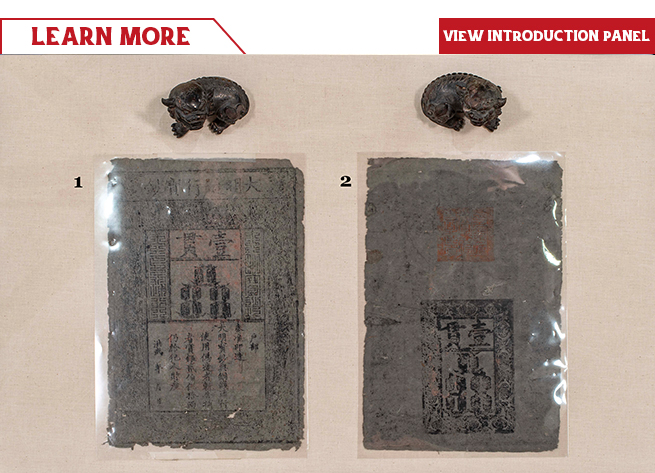
The earliest forms of paper money originated in China. During the Tang dynasty (618-907 CE), “Flying Money,” (or Bian Qian) evolved for convenience. More like a receipt, “Flying Money” was issued to merchants after they deposited cash with the government, army or other reliable institution. This receipt was redeemed at other official offices around the empire. While preventing the exportation of Chinese copper coins, it also freed traders from their heavy, metallic burdens. “Flying money,” however, was not circulated nor could it be traded and, thus, could not be used as currency.
During the Song dynasty (960-1279), promissory notes were introduced in Sichuan. Known as Jiaozi, they circulated as money, making them the first paper currency in history. Early Jiaozi notes were privately issued by merchants to replace the heavy, low value coins. Lacking standard denominations, the nominal value was filled in by the issuing company. Eventually, Sichuan merchant companies established the Paper Note Bank, standardizing denominations and designs, and in 1023, the government nationalized the paper currency.
The Southern Song dynasty (1127-1279) established a new paper currency, the Huizi. First issued in 1160, it was backed by cash coins. Huizi were used for daily transactions and tax collection, but, easily counterfeited, the currency depreciated and people hoarded coins. With the Mongol army marching south, the Southern Song printed vast numbers of Huizi notes to pay their defending army, causing rampant inflation.
The Mongols absorbed the Chinese Empire and expanded the use of paper money, as described by Marco Polo. The concept of paper substituting precious metal was shocking to Marco and he attributed its success to Kublai Khan’s authority. “With these pieces of paper, they can buy anything and pay for anything. And I can tell you that the papers that reckon as ten bezants do not weigh one.”
The Ming dynasty (1368-1644) continued to issue paper currency and attempted to replace all coinage with “Great Ming Circulating Treasure Notes.” However, over-issuance led to hyper-inflation (70%)! By 1425, paper currency was indefinitely suspended.
